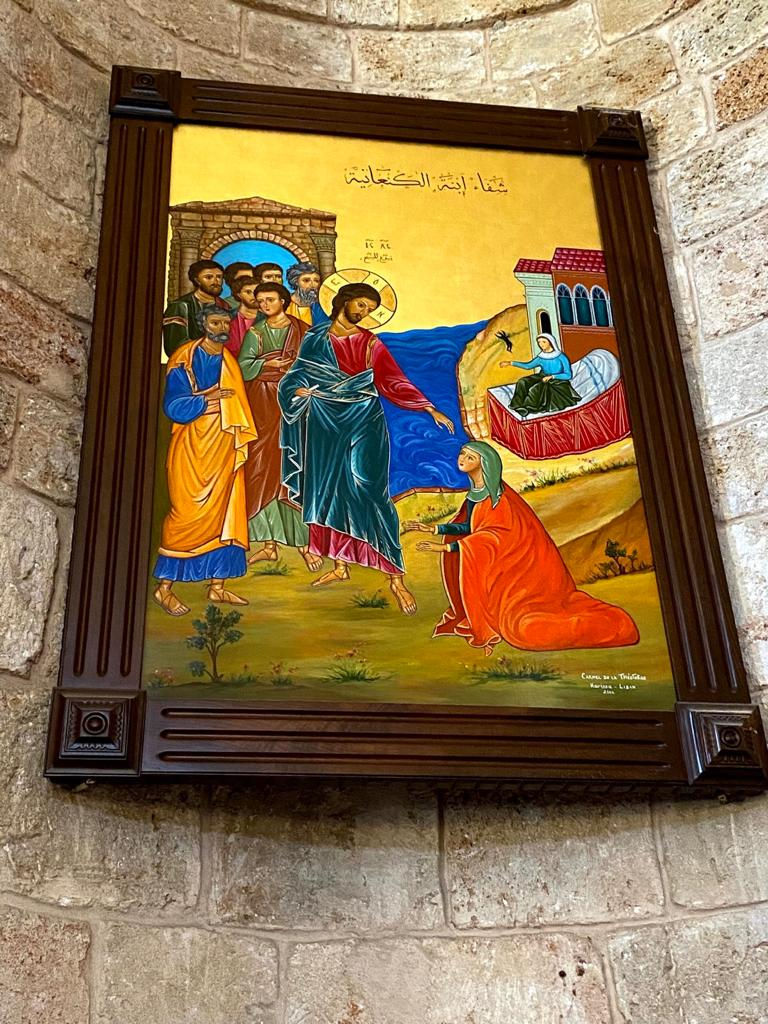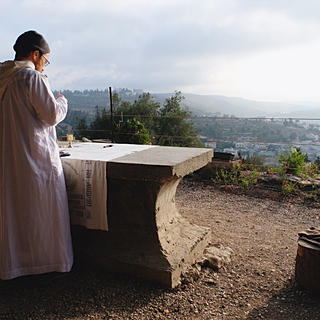The Testimony of Tyre
- Beatitudes Missions
- Aug 5, 2021
- 4 min read
Updated: Aug 6, 2021
During our three-week mission to Lebanon in July, our group spent a day in Tyre, an ancient coastal city that Jesus visited during his ministry. Fr. Rachad, a priest with the Community of the Beatitudes, guided us to various historical and religious sites and led us in Biblical reflections throughout the day. Hearing the scriptures and stories of the faithful in Tyre over the ages encouraged our group and emboldened us before we returned to the US the following week.
When Jesus first arrived in the region of Tyre and Sidon, “he entered a house, and would not have any one know it; yet he could not be hid. But immediately a woman, whose little daughter was possessed by an unclean spirit, heard of him, and came and fell down at his feet” (Mk 7:24-25).
When did the Syrophoenician woman’s faith in Jesus really begin? Upon seeing Him? Touching Him? No, St. Mark tells us that her faith was born upon hearing of Him. What she heard of Jesus was so powerful that she went to look for Him immediately. Because of what she heard, she considered any potential obstacles to obtaining healing for her daughter – her status as a Gentile, the fact that she didn’t bring her daughter physically to Jesus – inconsequential.

She must have sought out Jesus and begged Him for a miracle not only because she heard that He cast out demons, but that He was a man of compassion. She surely would not have persisted in asking Jesus for a miracle if she not only believed in his power to do it, but that He cared so much as to do it for her, a Gentile. So great was her faith in both his authority and love that even when Jesus seemed to reject her plea, she boldly persisted in her petition.
Rom 10:17 resounds in the Syrophoenician woman, for “faith comes from what is heard, and what is heard comes through the word of Christ.” Her story teaches us that when we hear and deeply believe in the word of God – in scripture, the writings of saints, the sacraments – we are compelled to do bold things in response.
The Syrophoenician woman was not the only one in Tyre to act boldly because of her faith in Jesus. We learned from Fr. Rachad that various acts of faith were made here. While the Syrophoenician woman acted on her faith in firm supplication to Jesus, others responded in mission, in death, and in waiting.
St. Paul’s presses on
As we sat on the edge of an extensive site of Roman ruins overlooking the Mediterranean Sea, Fr. Rachad read aloud Acts 21, which describes St. Paul’s seven-day visit to Tyre. During this short visit, the Christian community in Tyre urged him not to advance to Jerusalem, where his arrest was certain. But St. Paul’s faith in Jesus compelled him to bound ahead to Caesarea, where again a prophet tried to prevent his travel to Jerusalem. The resistance seemed to only strengthen his resolve in the Lord all the more as he declared, “For I am ready not only to be imprisoned but even to die at Jerusalem for the name of the Lord Jesus” (Acts 21:13). St. Paul embarked from the shore of Tyre to face resistance because of his heroic faith in Jesus, which he was ready to proclaim no matter the cost.
We imagined the Christians in Tyre escorting St. Paul onto a beach like the one where we meditated on these powerful passages. With the shore of Israel visible in the distance, we wondered what it was like for St. Paul to sail away so confident in and reliant on God despite the challenges awaiting him. The Roman architecture – once magnificent and mighty during St. Paul’s day – crumbled all around us, some of the columns submerged under the waves. The site itself spoke to us that the only thing that truly endures is God’s word, which must be shared and defended.
The 500 Martyrs
More Roman ruins lead us to a hippodrome. It wasn’t until we climbed the massive stadium seating that we learned that chariot races weren’t the only thing that took place on the fields below. Under the persecution of Diocletian in 304 AD, at least five Christians were martyred in this hippodrome. In his record of the Egyptian martyrs of Tyre, the historian Eusebius writes, “One could not but be astonished at the invincible firmness of these holy men, and the enduring and immovable constancy of those whose bodies were young. You could have seen a youth not twenty years of age standing unbound and stretching out his hands in the form of a cross, with unterrified and untrembling mind, engaged earnestly in prayer to God…” 500 Christians in Tyre were martyred under Diocletian’s rule.
Still looking down on the hippodrome, we entrusted persecuted Christians to Our Lady. We also prayed to the 500 martyrs to intercede for us, that we too will defend God and his word with unwavering courage and faith. Our prayer time continued in the Maronite church of Our Lady of the Seas, where many relics of the martyrs were displayed in an underground chapel.
“Be stouthearted, wait for the Lord!” (Ps 27:14)
Just when we thought we were headed back to the community house, Fr. Rachad surprised us with a visit to the Shrine of Our Lady of Mantara – Our Lady of Waiting – near Sidon. At the shrine – a place of pilgrimage for both Christians and Muslims – is a cave where Our Lady waited for Jesus to return from his ministry in Tyre and Sidon. The peace that Jesus must have experienced upon reuniting with his mother after long days of preaching and healing emanated from the simple chapel. We pondered how Mary felt as she said goodbye to her son over and over again throughout his ministry. As she waited for his return, she faithfully entrusted Him, and all the people He would encounter, to the Father. Mary’s quiet awaiting of her son exemplifies how we too should prayerfully and faithfully expect Jesus to enter the empty places in our hearts. A plaque at the shrine with the words “I am waiting for my children” reminded us that just as Mary waited for Jesus, she also waits for us to return to her so she can take us to Jesus.






























Comments